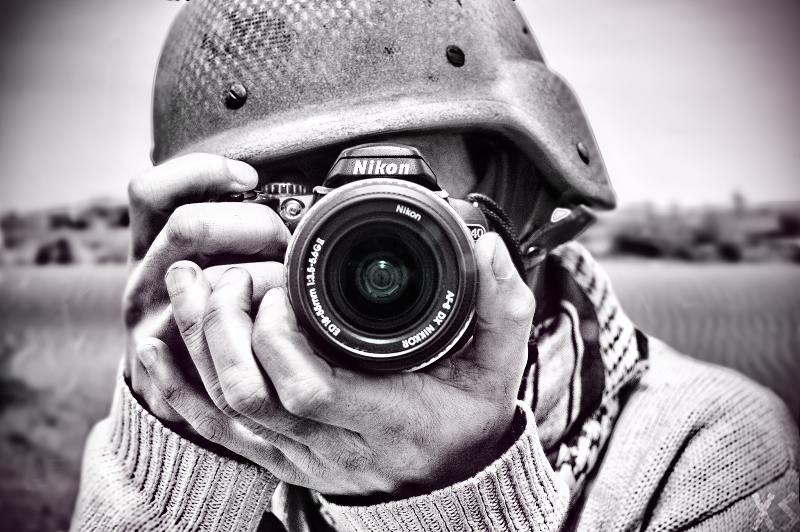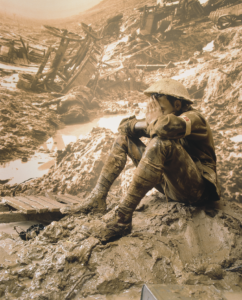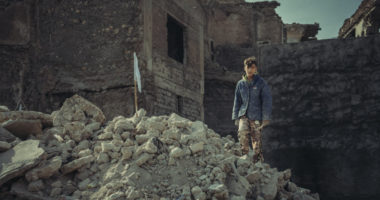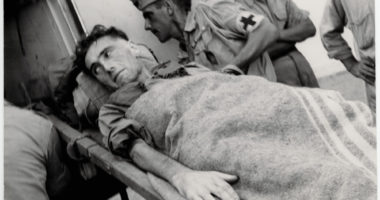In the most recent issue of the International Review of the Red Cross, authors look back at the last century of war through a humanitarian perspective, providing revealing insights on the role of media and the news in shaping public opinion.
This post is part of a series on the evolution of warfare.
Oxford Dictionaries named “post-truth” their word of the year for 2016. According to them, this adjective, which is defined as “relating to or denoting circumstances in which objective facts are less influential in shaping public opinion than appeals to emotion and personal belief”, has been increasingly used in 2016, going from peripheral to mainstream over the course of the year. In the last few months, concepts such as “fake news” have also been on everyone’s lips.
While reflecting on those concerns, it is worth looking back in time to see what lessons can be learned from history. The latest edition of the International Review of the Red Cross on the evolution of warfare sheds lights on the issue from a different perspective. Here are three insights that stand out and bring a new outlook on the role of media and the news in shaping public opinion. To borrow from Rain Liivoja, when looking for solutions to contemporary and emerging challenges “one cannot neglect history books”.
1. People have been questioning the integrity of the media for over a century
The first relevant observation coming from the Review is that mistrust of the media is nothing new. For the contemporary reader, perhaps the most striking passage on this subject comes in Éric Germain’s piece when, discussing the use of propaganda during World War I (WWI), he quotes a 1921 article on “the cacophony of ‘false news’”. This sounds oddly similar to increasingly frequent accusations towards both hoax sites and mainstream media and their “fake news”.
During WWI, the reasons for such a control of the media were obvious: “censorship gave rise to the feeling that ‘anything could be true except what was allowed to be printed’”. Wartime imperatives brought some States to keep a tight grip on the media, controlling what, and when, information could be released: censorship policies were used to further States’ interests in war. Knowing this, even though suspicion is now less aimed at official censorship policies than at the media themselves, critical thinking remains of utmost importance when getting informed by the media.
2. Appeal to emotions has long been used to shape public opinion
Another interesting insight from the Review’s latest edition is that appealing to emotions and personal beliefs has long been a central strategy in shaping public opinion on humanitarian issues.
The focus of Elizabeth Van Heningen’s piece, the South African War (1899-1902), was “the most publicized war outside Europe between the American Civil War and the First World War”. Reports from journalists on the treatment of the Boers, namely in internment camps, became easily available to the public. This, paired with the growing uneasiness about imperial conquest in the political left in Europe, allowed for the war to become “a touchstone for international morality, attracting military support and philanthropic aid”. As a faster and more accessible media coverage enabled the public to follow events throughout the world, public opinion became a more important factor in response to war.
On a similar note, Heide Fehrenbach and Davide Rodogno discuss how humanitarian organizations have used photography for media campaign. The starting point of the piece is the photo of the lifeless body of 3-year-old Syrian refugee Alan Kurdi on a Turkish beach, which went viral on social media in September 2015. If social media is a relatively new tool in humanitarian media campaigns, Fehrenbach and Rodgno argue that the publication of shocking pictures of a dead or suffering child in newsletters, newspapers and other media is a technique has been used since the late 1800s:
“[o]ne significant strand of this humanitarian imagery has been its insistent focus on the figure of the child. The photos of Alan are shocking, but viewed historically, they are symptomatic of longer trends.[…] This despite the fact that photo editors have congratulated themselves on ‘breaking taboos’ and taking ‘an important step’ in publishing and circulating photos of the lifeless Alan.”
The authors point out that although photography is used to show a reality, it allows to select, filter out and exaggerate certain elements. This, however, falls short of the Oxford Dictionaries definition of “post-truth”, as one crucial element is missing: nothing indicates that humanitarians and war reporters misrepresent objective facts to achieve their goals in shaping public opinion.
3. Despite the criticism, the media remain an indispensable actor in wartime
Last but not least, browsing through The evolution of warfare reminds readers that, despite its many faults, the media plays an invaluable role during war time in informing the population and fostering debates. Emre Öktem and Alexandre Tourmakine note that, during WWI, the British Ministry of War published, in the press of a neutral country, a denial of the accusations by the Ottoman empire of the use of asphyxiating gases on the battlefield. From a more legal point of view, Lindsay Cameron describes how the ICRC used the predecessor of the Review, the International Bulletin of Red Cross Societies as a forum for debate: “At the beginning of the First World War […] the ICRC stated as its policy that it would publish some of the protests or allegations of violations received from the parties without ascertaining the veracity of the complaints therein and would also publish the responses received.”
In his interview with the Review, Richard Overy positions himself has a vocal defender of the media and its role in wartime. Discussing aerial bombing, he states that “it is very important that the media are not hesitant in highlighting the human face of bombing and what it actually means.” He points out that journalists should work independently from the government, and should not be afraid of showing the consequences of bombing carried out by their own States. This is illustrated by Anna Di Lellio and Emanuele Castano who applaud the powerful criticism mounted by various civil society groups, including the media, which managed to bring light to the Bush administration’s policies on torture “and if not end them, at least curb their excesses”.
***
If mistrust towards the media appears to be in fashion lately, it is in no way a new phenomenon. Appeals to emotions and personal beliefs has long proven a very successful strategy, although this should not overshadow the need to rely on objective facts. Indeed, it would be reductive to dismiss the media as reporting solely on the basis of feelings rather than truth. Information remains a crucial factor in wartime, one that has the power and the resources to shed light on grave humanitarian concerns.
More in this series:
Are we living through the worst period in history? – Vincent Bernard, 15 February 2017.
The evolution of warfare: Focus on the law – George Dvaladze, 16 February 2017.
The evolution of warfare, IRRC no. 900
On the occasion of the remembrances marking the 100th anniversary of the First World War, the Review asked historians, legal scholars and humanitarian practitioners to look back at this century of wars from a humanitarian point of view. The contributions collected in this issue illustrate the changing face of conflict by placing human suffering ‒ so often relegated to the backdrop of history ‒ front and centre. They also touch upon positive developments and innovations in the field of humanitarian action and law.
The evolution of warfare is available at www.icrc.org/en/international-review/evolution-warfare.







Comments